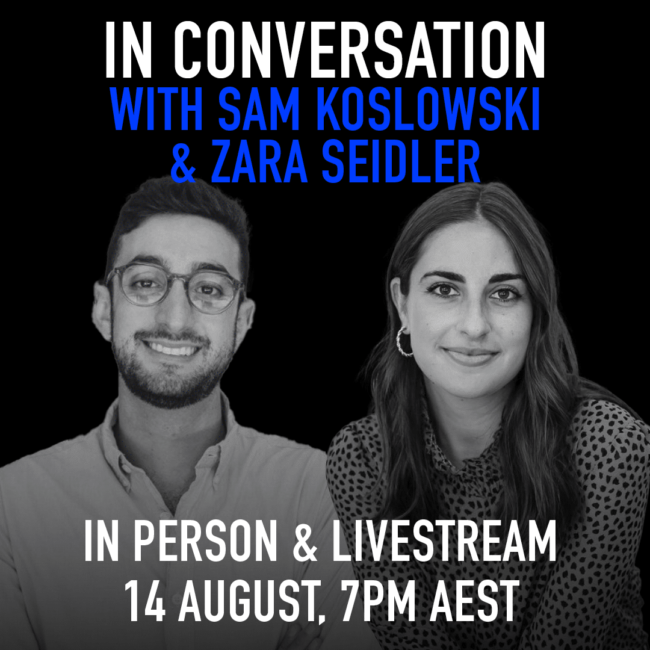
Big Thinker: Mary Wollstonecraft
Big thinkerPolitics + Human RightsRelationships
BY Kym Middleton The Ethics Centre 22 NOV 2017
Mary Wollstonecraft (1759—1797) is best known as one of the first female public advocates for women’s rights. Sometimes known as a “proto-feminist”, her significant contributions to feminist thought were written a century before the word “feminism” was coined.
Wollstonecraft was ahead of her time, both intellectually and in the way she lived. Pursuing a writing career was unconventional for women in 18th century England and she was denounced for nearly a century after her death for having a child out of wedlock. But later, during the rise of the women’s movement, her work was rediscovered.
Wollstonecraft wrote many different kinds of texts – including philosophy, a children’s book, a fictional novel, socio-political pamphlets, travel writings, and a history of the French Revolution. Her most famous work is her essay, A Vindication of the Rights of Woman.
Pioneering modern feminism
Wollstonecraft passionately articulated the basic premise of feminism in A Vindication of the Rights of Woman – that women should have equal rights to men. Though the essay was published during the French Revolution in 1792, its core argument that women are unjustifiably rendered subordinate to men remains.
Rather than domestic violence, women in senior roles and the gender pay gap, Wollstonecraft took aim at marriage, beauty, and women’s lack of education.
The good wife: docile and pretty
At the core of Wollstonecraft’s critique was the socioeconomic necessity for marriage – “the only way women can rise in the world”. In short, she argued marriage infantilised women and made them miserable.
Wollstonecraft described women as sacrificing respect and character for far less enduring traits that would make them an attractive spouse – such as beauty, docility, and the 18th century notion of sensibility. She argued, “the minds of women are enfeebled by false refinement” and they were “so much degraded by mistaken notions of female excellence”.
Mother of feminism and victim blamer?
Some readers of A Vindication for the Rights of Woman argued Wollstonecraft was only a small step away from victim blaming. She penned plenty of lines positioning women as wilful and active contributors to their own subjugation.
In Wollstonecraft’s eye, expressions of feminine gender were “frivolous pursuits” chosen over admirable qualities that could lift the social standing of her sex and earn women respect, dignity and quality relationships:
“…the civilised women of the present century, with few exceptions, are only anxious to inspire love, when they ought to cherish a nobler ambition, and by their abilities and virtues exact respect.”
While some might find Wollstonecraft was too harsh on the women she wanted to lift, her spear was very much aimed at men, “who considering females rather as women than human creatures, have been more anxious to make them alluring mistresses than rational wives”.
Grab it by the patriarchy
Like the word feminism, the word patriarchy was not available to Wollstonecraft. She nevertheless argued men were invested in maintaining a society where they held power and excluded women.
Wollstonecraft commented on men’s “physical superiority” although she did not accept social superiority should follow.
“…not content with this natural pre-eminence, men endeavour to sink us still lower, merely to render us alluring objects for a moment.”
Wollstonecraft’s hammering critique against a male dominated society suggested women were forced to be complicit. They had few work options, no property or inheritance rights, and no access to formal education. Without marriage, women were destined to poverty.
What do we want? Education!
Wollstonecraft pointed out all people regardless of sex are born with reason and are capable of learning.
In a time where it was considered racial to insist women were rational beings, Wollstonecraft raised the common societal belief that women lacked the same level of intelligence as men. Women only appeared less intelligent, Wollstonecraft argued, because they were “kept in ignorance”, housebound and denied the formal education afforded to men.
Instead of receiving a useful education, women spent years refining an appealing sexual nature. Wollstonecraft felt “strength of body and mind are sacrificed to libertine notions of beauty”. Women’s time was poorly invested.
How could women, who were responsible for raising children and maintaining the home, be good mothers, good household managers or good companions to their husbands, if they were denied education? Women’s education, Wollstonecraft contended, would benefit all of society.
Wollstonecraft suggested a free national schooling system where girls and boys were taught together. Mixed sex education, she argued, “would render mankind more virtuous, and happier” – because society and the term mankind itself would no longer exclude girls and women.
Ethics in your inbox.
Get the latest inspiration, intelligence, events & more.
By signing up you agree to our privacy policy
You might be interested in…
Opinion + Analysis
Health + Wellbeing, Relationships
You are more than your job
Opinion + Analysis
Politics + Human Rights
The rights of children
Opinion + Analysis
Relationships
The danger of a single view
Explainer
Relationships




